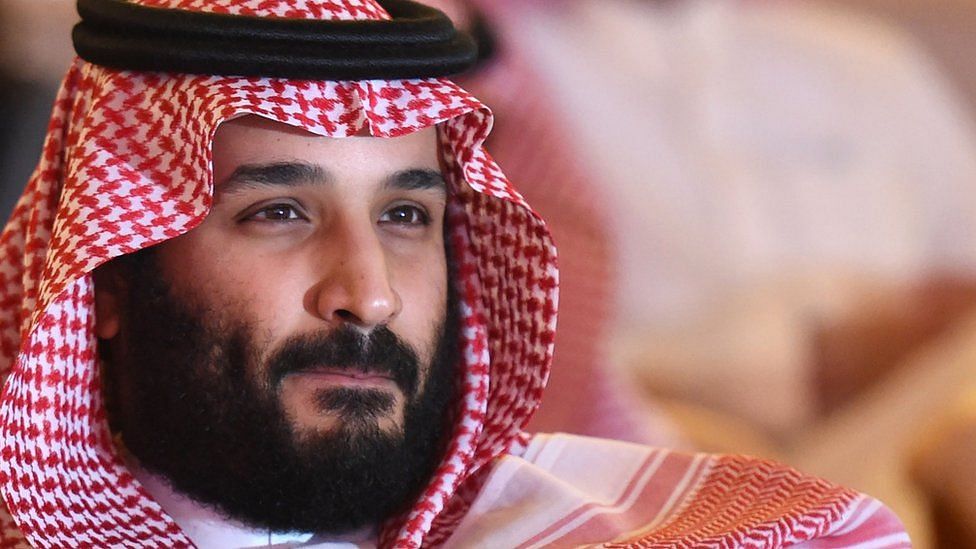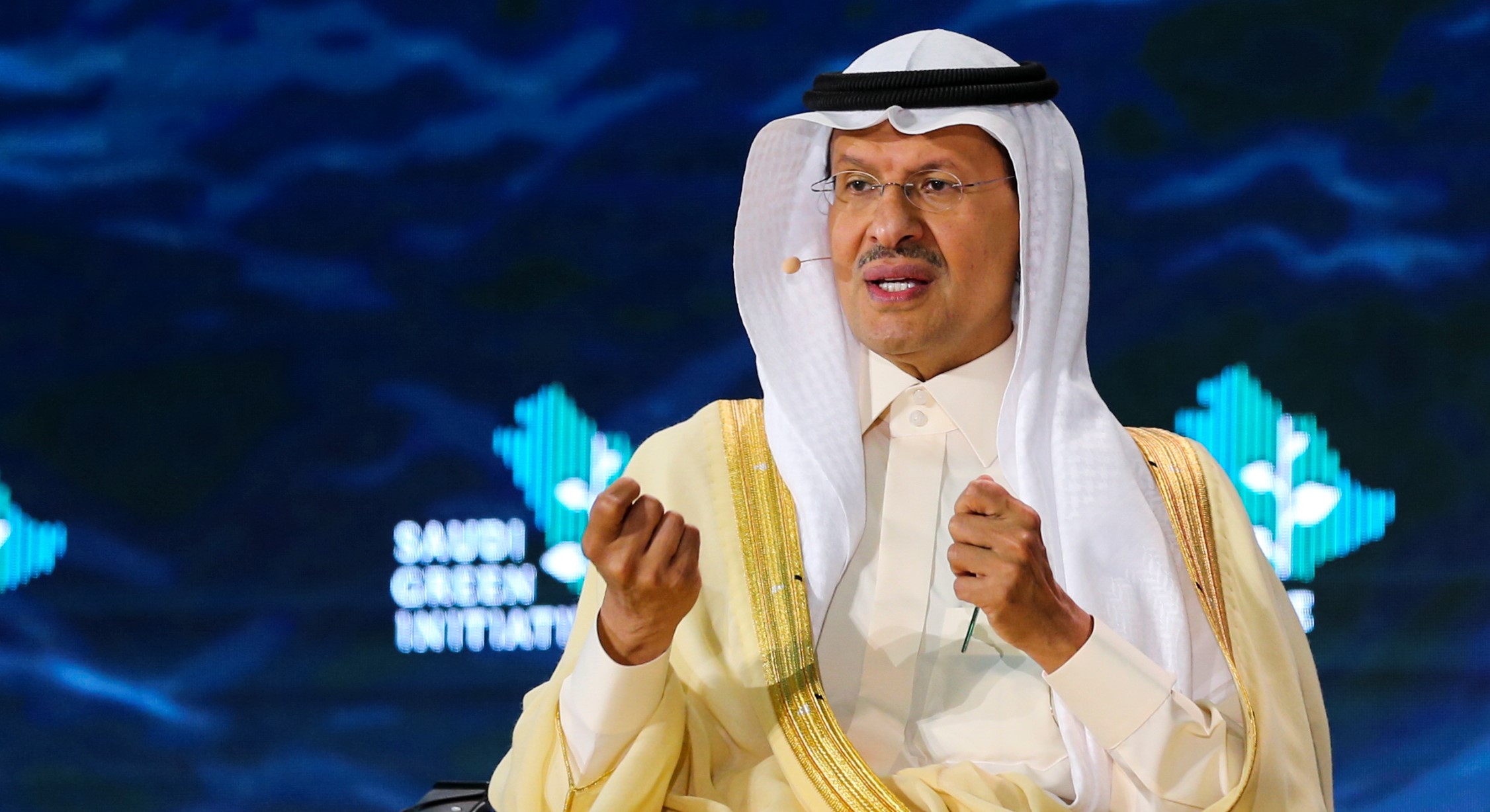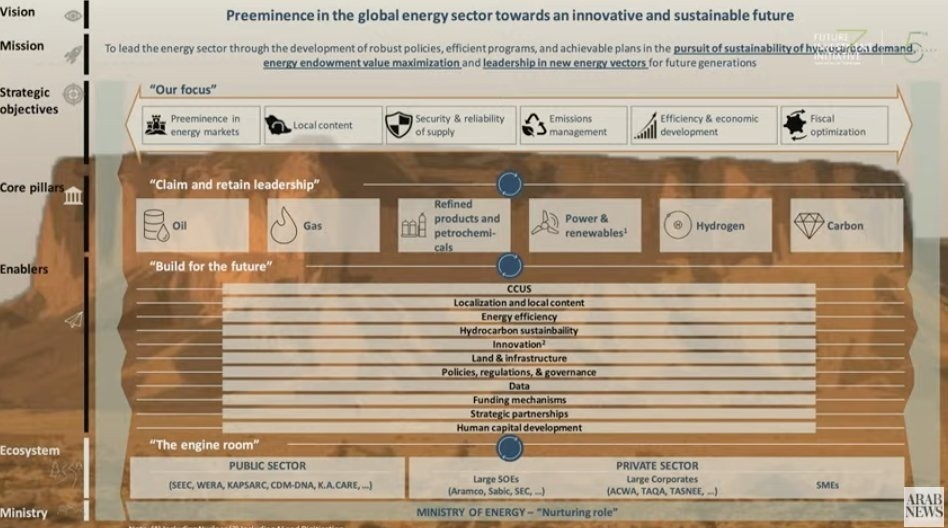- Without hydrocarbons energy transition is a dead end road
- Saudi Arabia and UAE set to counter COP26 strategies by own national Net Zero plans
- Investments in renewable energy and transition in Saudi Arabia to increase exponentially but integrating hydrocarbon futures.
The world is eagerly awaiting the COP26 results in the next weeks. The largest climate change gathering until now will need to address current and future threats not only to the environment, air and water quality, economic growth and the future of the world, but also take into account the possible impact of all these measures, proposals and grand schemes to be expected on respective countries and regions, especially outside of the OECD area. The current onslaught on hydrocarbon producers, companies and investors, is still going strong, but showing possible weaknesses already. The need for oil, gas and maybe even coal, in the future energy mix and other economic sectors, is partly misunderstood and definitely misrepresented by a wide range of reports and agencies. Hitting on major oil producing countries is still media hype, but seems now to be hit by rational analysis and measures taken by these “culprits of global warming”.
OPEC leader Saudi Arabia, not only known to be a major oil and gas producer, but also situated in the middle of an arid region that is under threat of global climate change issues, has been taking up the challenge of putting in place a substantial, rational and functional approach to future challenges. The Kingdom, not on its own in the region to address climate change and emission challenges, as shown by its compatriot Abu Dhabi lately, has put in place major new strategies and projects to combat climate change, counter overall carbon emissions, while at the same time supporting a rational and economic-social functional approach that maybe should be followed by more the coming months. To lower emissions, increasing energy efficiency while also increasing overall revenue basis, can be done, according to Saudi planners and experts.

Investments in renewable energy and transition in Saudi Arabia to increase exponentially but integrating hydrocarbon futures.
The last week it has become obvious that Saudi Arabia is not anymore waiting to be confronted by COP26 strategies and agreements, as the Kingdom seems to be well prepared for the global event to be held in Glasgow in a few days. In a well-devised approach, Riyadh has been setting up major plans and investment schemes to signal to the world audience how to cope with climate change, diversification, energy transition, while not at all abandoning its main license to operate at present on a world scale, oil and gas. The announcement by Saudi Crown Prince Mohammed bin Salman during the Saudi Green Week that the country will target Net Zero carbon emissions by 2060 has caused a major stir. Green initiatives targeting Saudi citizens and industry but also Middle East wide have been presented. At the same time, Saudi government has been pushing for lower hydrocarbon usage in power generation, largely by cutting overall subsidies and heavily investing in solar energy projects.
Since 2017, shortly after the announcement of Saudi Vision 2030 and the introduction of the “Davos in the Desert” Future Investment Initiative, all so-called Giga Projects, but especially its flagship NEOM, a multi-trillion city of the future project, have been labeled sustainable, as most of the future energy use of these projects are going to come from solar, wind and lately also green hydrogen options.

Saudi Arabia and UAE set to counter COP26 strategies by own national Net Zero plans
At the same time, Saudi officials have made it clear that to expect the Kingdom to abandon hydrocarbons in the near future is classified as believing in “Lala-land”. The latter term, used by Saudi energy minister Prince Abdulaziz bin Salman, popped up as a headline after the International Energy Agency’s call for less or even no investments in upstream oil and gas. Prince Abdulaziz dismissed the call as ‘a Lala-land sequel’. Without any remorse, Saudi’s official standpoint is still clear, oil is the main topic of conversation in the Kingdom, without the latter revenues no other developments will be able to be sustainable. The link between oil-gas revenues and renewables or emission free environments are however made, and the thoughts behind them are very rational and should not be dismissed as an oil dinosaur’s call for help. The link between all factors is been made as a supporter of the carbon circular economy (CCE) concept. For Riyadh the latter is a target of importance, as all renewable and carbon-lowering projects are linked to its hydrocarbon sector. For Crown Prince Mohammed bin Salman and his half-brother Prince Abdulaziz the Kingdom is not able to choose between countering or mitigating climate change effects and not using the tremendous hydrocarbon wealth of the country.
As Prince Abdulaziz stated “it’s all green transition…We pursue it through circular carbon economy. All energy sources must have green or environmentally friendly applications, including coal, oil, and gas. The use of all energy sources must continue, because it bolsters energy security and the economic development of many countries, not just the kingdom.” He also has been addressing the latter, in his function as chairman of the Saudi COP26 policy group, to Alok Sharma, the COP26 chairman. He stated to Sharma that the Kingdom sees “CCE as a framework for international efforts to combat global warming.”
As Saudi Arabia has been a signatory to the Paris Climate agreement, plans are in place to reduce emissions. Prince Abdulaziz already has stated that the Kingdom has submitted its so-called “nationally determined contributions” toward global climate goals. The latter entail at present emissions reductions of 278 million tons of carbon dioxide by 2030, relative to a business-as-usual baseline. Abdulaziz reiterated that in reality this will mean that the nation’s emissions will be between 741 million tons and 849 million tons that year. These figures, according to data from the Global Carbon Project indicate that actual emissions in 2030 may be between 27% and 45% higher than the emissions in 2019. So still more needs to be done. However, the plans presented are a clear sign that the call on Saudi Arabia is receiving attention and actions are taken.
The above statements are clearly as sign of the current times. Global economies, especially in the EU, USA and even China, are hit by an energy crunch, partly due to the mismatch between renewables and hydrocarbon investments and policies. The latter, as market analysts are indicating, shows that there is still a real equilibrium found between possible peak oil demand and renewable energy substitution. The lack of hydrocarbon supplies, partly due to geopolitical developments, but largely due to lower overall investments and policy decisions, is a clear threat to global economic growth. The current situation, in which OPEC+, led by Saudi Arabia, UAE and Russia, are shaping the market, is put on warning. As Prince Abdulaziz has said repeatedly, things could get worse if green policies are too stringent. Saudi strategists are now stating that as global demand is strong and growing, pushing prices up, calls from others to cut overall hydrocarbon production and investments are counterproductive. At the same time, Saudi Arabia has the overall luxury to play both sides.
By partly countering growing internal OPEC+ members demand for production increases and the call by USA, EU and others, to open taps to bring prices down, Riyadh can state it is showing its sustainability policies in action. It is ‘Sustainability Al Malakiya’, or the Saudi way. By balancing officially the environment and energy supply concerns, Riyadh is able to push back both sides, while its own financial future is still very healthy.

Since the end of 2019 Saudi Arabia, in anticipation of the growing COP26 outfall and pressure on its Goose with the Golden Egg, oil and gas, has been pushing for a CCE approach of Climate Change measures, During Saudi G20 leadership the latter option was put on the table in almost every single workshop or meeting. The latter approach is now being put in place, as statements and strategies presented during the Saudi Green Initiative week have shown. Saudi Crown Prince Mohammed bin Salman has set the scene for not only Saudi’s strategy at COP26, but most probably by all other Arab and non-Arab oil producing countries. OPEC+ and even the Gas Exporting Countries Forum (GECF) members will be driving down the same road, even if they are not attending maybe, such as Russia. The scene set by Mohammed bin Salman, presenting a long list of plans to address global warming, sustainability and economic diversification in his country, should not be taken lightly. The targets set by Net Zero 2060 are high, but more reasonable and rational than most plans currently being presented by the USA or EU. Full Net Zero, down the whole value chain, or in a Dutch way looking at Shell’s position, worldwide, is not rational and unrealistic.
Saudi Arabia however is not only focusing on a pure national Net Zero policy, which is less challenging as it doesn’t include emissions of hydrocarbons and other products being produced by the Kingdom, but used (emissions) elsewhere, but also puts straight away major multibillion strategies and projects in place. The plan to plant around 50 billion trees in the Middle East in the next decade sounds maybe Hollywoodish but can be done, or maybe should even be done. At the same time, Saudi Arabia’s investments in a $10.4 billion clean energy project in the region is definitely not as far fetched as it looks. Looking at other Giga Projects, currently again being discussed at FII2021 in Riyadh, have been put in place, even if most analysts were very critical. The set-up of Alaama, Qiddiya or the GIGAX project NEOM is in place and work is continuing. All these projects have a major red line, sustainability and renewable energy focused. All of them, even new ones to be expected the coming days, have a major green factor, showing the advantage of a centralized decision-making process led by a young prince. Criticism is still there, but the overall net-outcome of all is much more positive than even I had expected during the presentations at FII217, FII2018 and the infamous FII2019.
Riyadh and MBS have set their goals, all eyes are on reaching success. The latter is needed, especially when dealing with COP26 and other issues, such as ESG/SDG investment related constraints. A realistic Saudi sustainable economic diversification is also the main pillar to build the Kingdom’s future on. All is needed to enhance or support the license to operate of the main revenue generator, oil and gas. Days before MBS made his Net Zero 2060 commitment, and presented new major green projects, Aramco, the economic lifeline at present of the Kingdom stated to the press that it will increase overall oil production capacity from 12 million bpd to 13 million bpd in 2027. Even that critics and environmental activists look at this as another blow to COP26 or mitigating climate effects, Saudis understand that without oil and gas no revenues will be there to finance the transition. No future economic sectors, capable to compete with high-tech, fin-tech or even tourism, will be available to its own nationals. A full-break with oil and gas in Saudi Arabia is not to be expected in the next 3-4 decades. As several former and current ministers of energy have stated openly, Saudi Arabia will be producing the last barrel of oil in the world. As Aramco’s CEO Amin Nasser has stated “demonizing hydrocarbon industry is not going to help anyone”. All Saudi leaders, supported by their compatriots in OPEC+, find it unrealistic to stop producing oil and gas, especially at a time that hydrocarbons are needed for decades to come. The energy transition is not able to be put in place even without hydrocarbon production at all, as oil and gas is not only energy but also products.
Riyadh is playing the ‘long game’. Combining hydrocarbon production and investments with energy transition and diversification of the economy is the main goal for the next decades. Investments needed in renewables, especially if taking on the challenge to become the new global leader of (green) hydrogen, will be staggering. Without having access to capital without threats to its own position, Saudi Arabia will be using its pivotal role in oil and gas worldwide to squeeze the last dollar out of the reserves in place. The latter does not mean Saudi leaders and analysts don’t see the negative side of global oil and gas. To mitigate the latter, vast new projects, such as the largest green hydrogen plant in NEOM is already going to be build, After the Saudi Green Initiative, new plans have been made public costing around $187-188 billion by 2030. The Kingdom also is heavily investing in the set up and commercialization of CCUS projects, which could be in place much faster than the grand-scale projects already discussed for 10s of years in Europe and elsewhere.
The main advantage that Saudi Arabia, or its neighbors UAE and Qatar, have is clear. Access to energy and capital is not a real issue at present. At the same time, as the main drivers of the existing economies are still oil and gas, the role of national oil companies such as Aramco, ADNOC and Qatar Energy (formerly QP) is of the utmost importance. These giant companies have the technical knowledge and capabilities to change their own (national) operations significantly. By removing mainstream emissions and increasing efficiency not only will help their own rankings but support directly national strategies too. Abu Dhabi’s ADNOC announcement yesterday that they will be taking only renewable and nuclear energy supplies for their operations shows the moves being made at present. By removing a major emission source from operations, as former energy use was based on burning oil and gas for electricity generation, the whole system is being revitalized in every single ESG, SDG or COP26 assessments. The Abu Dhabi option will for sure be now also on the drawing tables of MBS, Amin Nasser or the Ministry of Energy. Realism and pragmatism are clearly a better way of dealing with sustainability, as it not only includes environment or emissions, but also people and economics. Further projects are already also focusing on removing emissions from downstream operations by Aramco and others. Fertilizers, plastic and polymers are going to be in much higher demand the next years due to population growth and emerging economies. Removing CO2 emissions is a necessity for the likes of Aramco and its sister SABIC.
Looking at the above developments and strategies, I would love to see any Western politician or leader address further cuts in oil and gas investments at COP26. The statements made by Saudi Arabia are clear. Oil and gas are needed, and will be playing a pivotal role in economic growth and welfare the next decades. Saudi officials also can rely on the fact that other producers will be saying the same. ADNOC’s CEO Sultan Al Jabr already criticized the current anti-hydrocarbon media onslaught the last days also. “We can’t just come out of nowhere and all of a sudden speak about energy transition and completely ignore or underestimate the impact of oil and gas in helping meet global energy requirements,” Al-Jaber said, noting that 80% of total energy requirements currently come from fossil fuels, with 60% of that oil and gas. Western economies and global growth still depend on the black gold or its sister natural gas. Seems to be much more applicable to put in place a combined sustainability green net zero policy in place that recognizes the role of oil and gas in the transition, Without the latter, a transition will be a revolution, with bloody results on all sides.
As COP26 has been labeled as a ‘make or break’ moment for the planet, it is clear that without hydrocarbons it is will be a break (down).
Cyril Widdershoven, He is an international energy expert. Senior Fellow at the Mediterranean Institute for Regional Studies. Dr, Widdershoven has also earned his PhD degree at King’s College, University of London, Department of War Studies, and an M.A. in Middle East Studies at the University of Nijmegen, Netherlands.